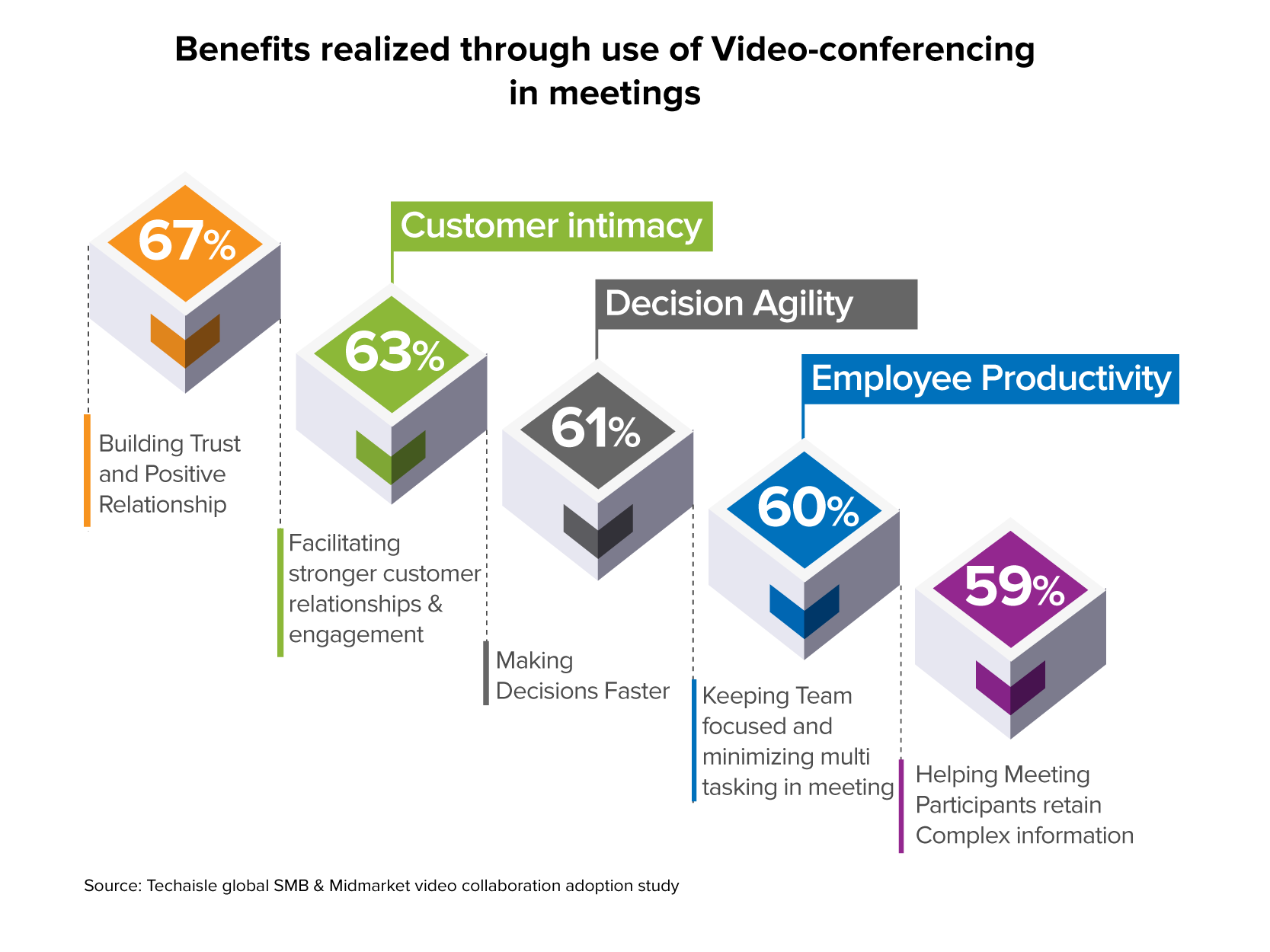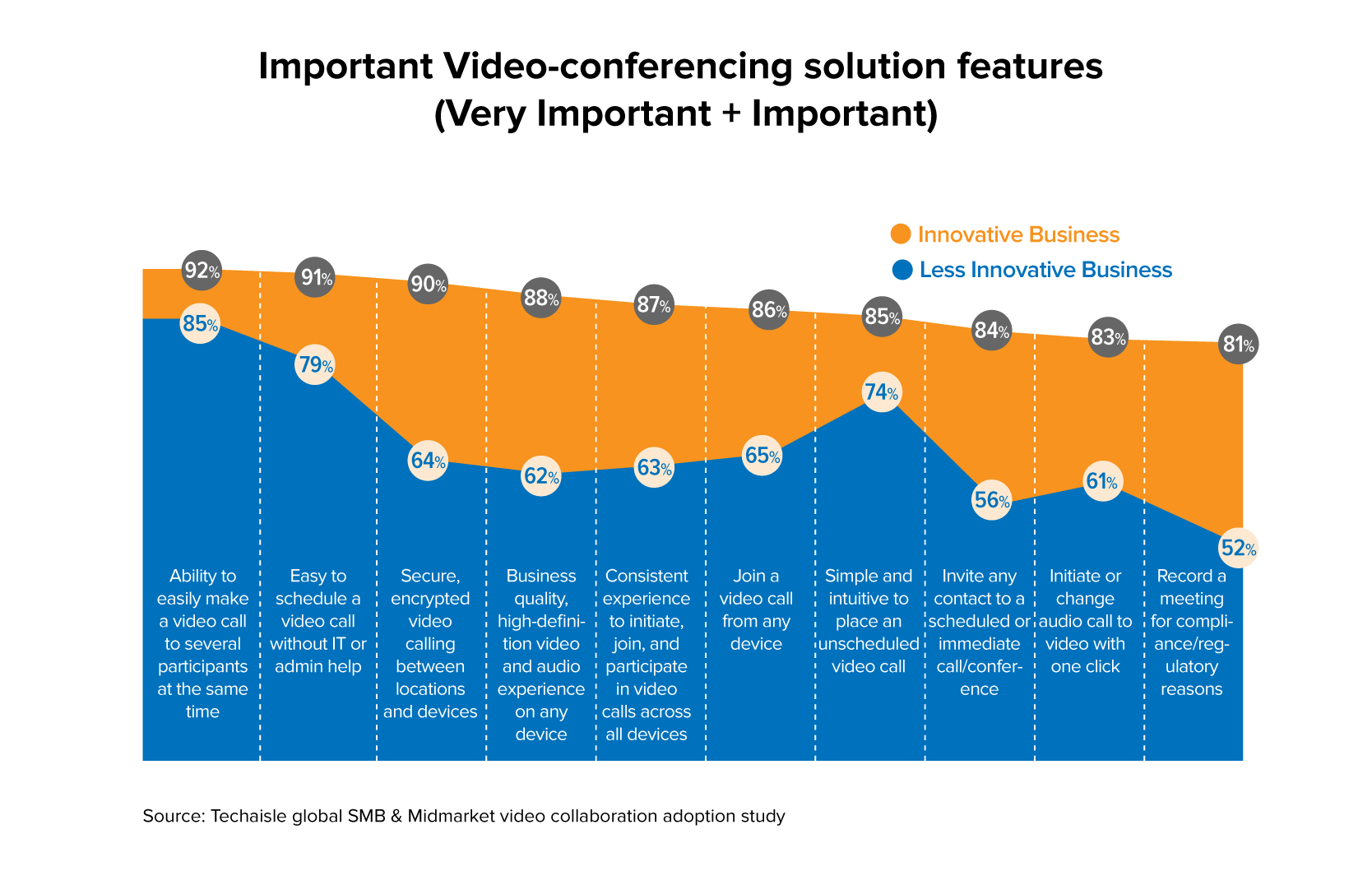Techaisle data shows that the percent of US SMBs using web-video conferencing solutions is likely to increase from 38% to 89%, a change of 184%. It is common knowledge that cloud is being adopted by SMBs and midmarket businesses for business agility and video-conferencing is playing an increasing role in contributing to SMB agility - decision agility, productivity agility, customer agility and innovation agility - for high-growth and innovative businesses. Businesses without modern collaboration solutions are scrambling to catch up with those that are already capitalizing on the benefits video-conferencing solutions. As new adopters are learning from firms that have already made early investments in the technology, Techaisle is seeing reasons for launching collaboration initiatives rapidly evolve. A comparison of early adopters to firms that are just now embracing advanced collaboration systems finds that the pace set by early adopters is forcing other SMB firms to invest in collaboration solutions to address current and future market issues.
This next generation of SMBs & midmarket business collaboration solution adopters is responding to specific pain points, more than their predecessors and video-conferencing is figuring in their collaboration strategies, specifically because:
• They cannot coordinate meetings involving employees in multiple locations
• Customer satisfaction is declining
• The pace of decision making is too slow
• Email is not an adequate means of connecting staff with each other and with customers
• They are trailing competitors and want to catch up
• They have to keep pace with market uncertainty and want to find new avenues for business viability and growth
Survey data finds that these firms have begun using video-collaboration solutions as a reaction to business problems that are preventing them from achieving their business objectives of growth, productivity, time to market, customer retention and operating cost reduction.

Once the decision has been made to use video-conferencing solutions, the purchase decision process lands on the question “what are the key features that our organization will require from the solution?” Taking a lesson from the page of high-growth and innovative businesses, survey finds that there are ten specific features, coalescing around security, simplicity and superiority, that drive a solution selection.

The above feature set requirements and differences between innovative and less innovative businesses is consistent across all geographies and SMB segments. When data is compared between ITDMs (IT decision makers) and BDMs (Business decision makers), there is consistency in importance of features although ITDMs’ list is topped by security and BDMs’ by ease of use and simplicity. It is easy to grasp why some video conferencing solutions such as Zoom, Cisco WebEx and Microsoft Teams are SMB favorites. Three key points are stacked in their favor – 1/ ability to easily make a video call to several participants at the same time, 2/ easy to schedule a video call without IT or admin help and, 3/ simple intuitive to place an unscheduled video call.
The evidence gathered through the Techaisle study demonstrates that SMBs can and are deriving tremendous benefits from deploying video-conferencing solutions but the specific payback realized by each business isn’t simply a matter of investing in video capabilities – it increases as SMBs and midmarket firms align video-conferencing with business outcomes. SMBs should pursue the outcomes associated with high-growth, highly innovative businesses. If collaboration is important to business success – and the data presented here clearly shows that it is – it’s important to align collaboration strategy, activities and investments with the best-case outcomes of high levels of business growth and innovation. Innovation happens best in collaboration and not in isolation. SMBs are realizing that initial centricity of file sharing is giving way to rich in-person interactive communications in their business strategies.